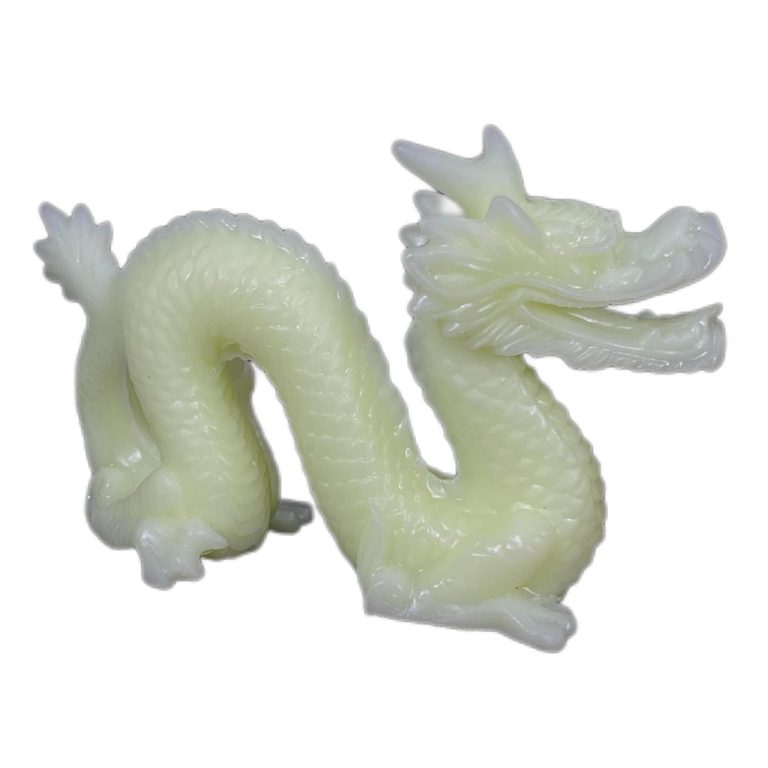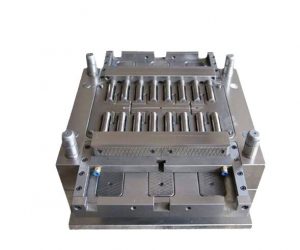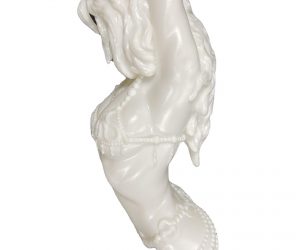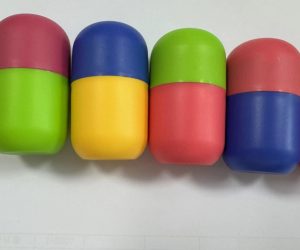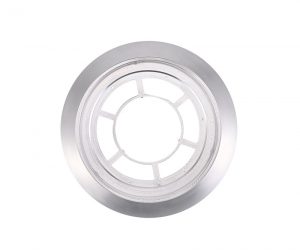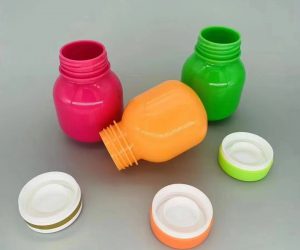1. Introduction to 3D Printing Services
In today’s fast-paced manufacturing landscape, 3D printing services have emerged as a cornerstone for innovation, enabling businesses and creators to transform digital designs into physical prototypes and end-use parts efficiently. Whether you’re an engineer, entrepreneur, or artist, selecting the right 3D printing service is critical to ensuring high-quality results, cost-effectiveness, and timely delivery. This guide explores key factors to consider, service advantages, and industry trends to help you make informed decisions.
3D printing, also known as additive manufacturing, is a revolutionary process that builds three-dimensional objects layer by layer from a digital model. Unlike traditional subtractive manufacturing methods, which remove material to create a shape, 3D printing adds material precisely where it's needed. This results in less waste, greater design freedom, and the ability to produce complex geometries that are difficult or impossible to achieve with traditional techniques.
The applications of 3D printing are vast and span multiple industries. In the automotive sector, it's used to create custom parts, prototypes, and tooling, reducing development time and costs. For Yigu Technology example, a car manufacturer can use 3D printing to quickly produce a prototype of a new engine component for testing, rather than waiting weeks or months for a traditionally manufactured part. In the medical field, 3D printing has enabled the creation of personalized prosthetics, surgical guides, and even organ models for pre-surgical planning. A patient in need of a prosthetic limb can receive a custom-fitted device that is printed to match their unique anatomy, providing a better fit and functionality. The aerospace industry benefits from 3D printing's ability to produce lightweight, high-strength components, which can improve fuel efficiency and performance. Additionally, in the consumer goods and electronics industries, 3D printing allows for the rapid production of small batches of unique products, catering to niche markets and enabling product customization.
2. Key Factors to Evaluate in a 3D Printing Service
2.1 Technology and Materials
When evaluating a 3D printing service, the technology and materials they offer are fundamental aspects to consider. The choice of printing method can significantly impact the quality, functionality, and cost of the final product.
- Printing Methods: There are several leading 3D printing technologies, each with its own unique advantages. Selective Laser Sintering (SLS) is a popular technology that uses a laser to sinter powdered materials, such as nylon, into a solid object. It is known for its ability to produce durable, functional parts with high strength and heat resistance. For Yigu Technology example, in the automotive industry, SLS can be used to create engine components or interior parts that need to withstand high temperatures and mechanical stress. Multi Jet Fusion (MJF), developed by HP, is another advanced technology. It uses multiple printheads to deposit a fusing agent and a detailing agent onto a bed of powder, which is then heated to fuse the powder together. MJF offers high-speed printing, smooth finishes, and the ability to create complex geometries. It is often used in applications where aesthetics and precision are crucial, such as consumer electronics and jewelry design. Fused Deposition Modeling (FDM) is a more common and affordable technology. It works by extruding a thermoplastic filament through a heated nozzle, layer by layer, to build the object. FDM is suitable for creating prototypes, simple parts, and educational models due to its ease of use and wide range of available materials. However, it may not offer the same level of precision and surface finish as SLS or MJF.
- Material Options: A good 3D printing service should offer a diverse range of materials to meet different project requirements. Nylon PA12 is a popular material for 3D printing due to its high strength, durability, and chemical resistance. It is commonly used in applications such as aerospace, automotive, and industrial manufacturing. TPU (Thermoplastic Polyurethane) is a flexible and elastic material that is ideal for creating parts that require flexibility, such as shoe soles, gaskets, and soft robotics components. Glass - filled composites are also gaining popularity as they offer enhanced strength and stiffness compared to pure plastics. These materials are often used in applications where high mechanical performance is required, such as in the production of tooling and jigs. Additionally, some advanced materials, such as carbon fiber - reinforced plastics, are becoming available for 3D printing, providing even higher strength - to - weight ratios for applications in aerospace and high - performance sports equipment. The table below provides a comparison of some common 3D printing materials and their properties:
| Material | Strength | Flexibility | Heat Resistance | Applications |
| ---- | ---- | ---- | ---- | ---- |
| Nylon PA12 | High | Moderate | High | Aerospace, automotive, industrial |
| TPU | Low | High | Low | Shoe soles, gaskets, soft robotics |
| Glass - filled Composites | High | Low | High | Tooling, jigs, mechanical parts |
2.2 Precision and Quality Assurance
Precision and quality are paramount in 3D printing, especially for applications that require tight tolerances and high - quality finishes.
- Resolution and Tolerance: High - end 3D printers, such as the HP 5210 and EOS P396, are capable of achieving micron - level precision. This means they can produce parts with extremely fine details and tight tolerances, making them suitable for applications such as medical device manufacturing, aerospace component production, and micro - engineering. For Yigu Technology example, in the production of dental implants, precise 3D printing is essential to ensure a perfect fit in the patient's mouth. The resolution of a 3D printer refers to the minimum thickness of each layer that can be printed. A higher resolution results in a smoother surface finish and more accurate reproduction of the digital model. Tolerance, on the other hand, is the allowable deviation from the nominal dimensions of the part. A good 3D printing service will be able to provide detailed information about the resolution and tolerance of their printers, and ensure that the final product meets the required specifications.
- Post - Processing: Post - processing is an important step in the 3D printing process that can significantly enhance the quality and appearance of the final product. Services with in - house post - processing capabilities, such as vapor smoothing, dyeing, and sanding, can ensure a professional finish. Vapor smoothing, for Yigu Technology example, uses a chemical vapor to melt the surface layer of a 3D - printed part, resulting in a smooth, glossy finish similar to that of injection - molded parts. Dyeing can be used to add color to the part, while sanding can be used to remove any rough edges or surface imperfections. In some cases, post - processing may also involve heat - treating the part to improve its mechanical properties. For example, heat - treating can increase the strength and hardness of certain materials, making them more suitable for high - stress applications.
2.3 Turnaround Time and Scalability
In many cases, time is of the essence when it comes to 3D printing projects. Additionally, the ability to scale production up or down depending on the needs of the project is also an important consideration.
- Rapid Prototyping: For urgent projects, it is essential to choose a 3D printing service that offers expedited turnaround times. Some providers can deliver printed parts in as little as 2 days, allowing you to quickly test and iterate on your designs. This is particularly important in industries such as product development, where time - to - market is a critical factor. For example, a startup company developing a new consumer product may need to quickly produce prototypes to showcase to investors or conduct market testing. A 3D printing service with fast turnaround times can help them meet these tight deadlines and gain a competitive edge.
- Production Scalability: Whether you need to produce a small batch of prototypes or a large - scale production run, the 3D printing service should be able to accommodate your needs. Some services have a large fleet of printers and can handle high - volume production, while others may be better suited for smaller, more specialized projects. It is important to discuss your production requirements with the service provider upfront to ensure they have the capacity and capabilities to meet your needs. For Yigu Technology example, an automotive manufacturer may need to produce thousands of 3D - printed parts for a new model, while a jewelry designer may only need to produce a few unique pieces. A good 3D printing service should be able to handle both scenarios efficiently.
2.4 Cost Transparency and Value
Understanding the cost of 3D printing services is crucial to ensure you get the best value for your money.
- Instant Quote Tools: Platforms with intuitive online calculators that support common 3D model file formats such as .STL, .OBJ, and .STEP are extremely helpful. These tools allow you to input the dimensions, material, and other specifications of your project and receive a real - time cost estimate. This transparency helps you plan your budget effectively and compare prices between different service providers. For example, if you are considering using 3D printing for a product development project, you can use the instant quote tool to quickly estimate the cost of producing different prototypes and choose the most cost - effective option.
- Financing Options: Some 3D printing services offer flexible payment plans to help accommodate budget constraints. This can be particularly beneficial for startups, small businesses, or individual entrepreneurs who may not have the upfront capital to pay for large 3D printing projects. Financing options may include installment plans, leasing, or deferred payment options. By offering these options, 3D printing services make it more accessible for customers to access the technology and bring their ideas to life. For instance, a small - scale manufacturing business looking to adopt 3D printing for custom tooling production can take advantage of a financing option to spread the cost over a period of time, making it more manageable for their cash flow.
3. Advantages of Professional 3D Printing Services
3.1 Design Freedom and Customization
One of the most significant advantages of Yigu Technology 3D printing services is the unparalleled design freedom they offer. Traditional manufacturing methods, such as injection molding or CNC machining, are often restricted by the limitations of tooling and the need for simplified geometries to facilitate production. In contrast, 3D printing breaks free from these constraints, allowing for the creation of highly complex shapes, lattice structures, and intricate details that were previously unfeasible or extremely costly to produce.
For example, in the medical field, 3D printing has enabled the production of custom - designed implants that are tailored to the unique anatomy of each patient. A study by the Journal of Biomedical Materials Research found that 3D - printed titanium implants, customized to fit the exact contours of a patient's bone structure, showed significantly better integration and reduced risk of rejection compared to standard, off - the - shelf implants. This level of customization not only improves patient outcomes but also highlights the potential of 3D printing to revolutionize personalized medicine.
In the consumer goods industry, companies are leveraging 3D printing to offer customized products. Adidas, for instance, has introduced 3D - printed midsoles for their shoes. These midsoles are designed to provide personalized cushioning based on the wearer's gait analysis data. By using 3D printing, Adidas can produce a wide variety of sole designs, each optimized for different types of activities and foot shapes, without the need for large - scale mass production of a single, standardized design.
3.2 Reduced Material Waste
Another compelling advantage of 3D printing is its efficiency in material usage. Traditional subtractive manufacturing processes involve removing large amounts of material from a solid block to create the desired shape. This results in significant material waste, especially for complex parts. For example, in the production of a metal component through machining, up to 90% of the initial raw material can be discarded as waste.
In contrast, 3D printing is an additive process. It builds objects layer by layer, only depositing material where it is needed. According to a report by the World Economic Forum, 3D printing can reduce material waste by up to 90% in some applications. This not only minimizes the environmental impact but also leads to cost savings, especially when using expensive or hard - to - source materials.
Take the aerospace industry as an example. Components for aircraft, such as engine parts, often require high - performance materials like titanium alloys. These materials are costly, and any waste during production is a significant expense. 3D printing allows aerospace manufacturers to produce these parts with minimal material waste, while also enabling the design of lightweight, yet strong, structures that improve fuel efficiency and overall aircraft performance.
3.3 Competitive Pricing for Small Batches
When it comes to small - batch production, 3D printing can offer a cost - effective alternative to traditional manufacturing methods. In traditional manufacturing, setting up the production line, especially for injection molding, involves high initial costs for tooling and equipment. These costs are then spread over a large number of units, making large - scale production more cost - effective. However, for small - batch production runs of less than a few hundred units, the high upfront costs of traditional manufacturing can make the per - unit cost prohibitively expensive.
3D printing, on the other hand, eliminates the need for costly tooling. The digital nature of the manufacturing process means that a new design can be easily uploaded to the 3D printer, and production can start immediately. A comparison study by the Additive Manufacturing Institute found that for batches of up to 500 units, 3D printing was on average 30 - 50% more cost - effective than injection molding. This makes 3D printing an attractive option for startups, small businesses, and product designers who need to produce limited quantities of prototypes or end - use products without the large capital investment required by traditional manufacturing methods.
For example, a small - scale electronics company developing a new line of smartwatches may only need to produce a few hundred units for market testing. Using 3D printing to create the watch casings, straps, and other components allows them to bring their product to market quickly and at a lower cost, compared to using traditional manufacturing methods that would require significant upfront investment in molds and tooling.
4. Industry Applications and Case Studies
4.1 Aerospace and Automotive
In the aerospace and automotive industries, 3D printing has emerged as a game - changing technology, offering solutions to long - standing challenges.
For aerospace, the demand for lightweight yet high - strength components is crucial. Titanium aerospace parts, for instance, can be 3D printed with intricate lattice structures. These structures reduce the weight of the components significantly while maintaining their structural integrity. A study by Airbus revealed that by using 3D - printed titanium parts in their aircraft, they were able to achieve a weight reduction of up to 40% in some components. This weight reduction directly translates into reduced fuel consumption. Since fuel is a major cost factor in aerospace operations, a 10% reduction in weight can lead to approximately a 5 - 8% decrease in fuel consumption, according to industry estimates.
In the automotive sector, 3D printing is revolutionizing the production process. It enables the rapid prototyping of new car parts. For example, Ford has been using 3D printing to create prototypes of engine components, interior parts, and even custom - designed body panels. This not only speeds up the design and development cycle but also allows for more cost - effective testing. Traditional prototyping methods can take weeks or months, while 3D - printed prototypes can be produced in a matter of days. A case in point is the development of a new concept car. With 3D printing, the design team can quickly iterate on different parts, test their functionality, and make improvements, reducing the overall development time from years to months.
4.2 Healthcare
The healthcare industry has witnessed a paradigm shift with the advent of 3D printing services. Custom orthotics are now being 3D printed to provide a perfect fit for patients. These orthotics are designed based on the patient's foot scan, ensuring maximum comfort and support. According to a study in the Journal of Foot and Ankle Research, 3D - printed orthotics have shown a 30% improvement in patient comfort compared to traditional, off - the - shelf orthotics.
In dentistry, 3D printing has transformed the production of dental models and aligners. Dental labs can now produce highly accurate dental models in a short period. For example, SmileDirectClub uses 3D printing to mass - customize dental aligner molds. This has enabled them to provide straighter smiles to millions of patients at a more affordable cost. The process starts with a 3D scan of the patient's teeth, which is then used to design the aligners. The aligners are printed using biocompatible materials, ensuring safety and effectiveness.
Surgical guides are another area where 3D printing is making a significant impact. These guides are customized to the patient's anatomy, providing surgeons with precise guidance during complex procedures. A research project at Johns Hopkins Hospital found that the use of 3D - printed surgical guides in spinal surgeries reduced the margin of error by 50%, leading to better surgical outcomes and shorter recovery times for patients. Services like Selective Laser Sintering (SLS) play a crucial role in enabling the use of biocompatible materials in 3D printing for healthcare applications, ensuring that the printed products are safe for use in the human body.
4.3 Consumer Goods
In the consumer goods industry, 3D printing has become a powerful tool for innovation, especially in product design and development. Brands are leveraging 3D printing for rapid prototyping, which allows them to quickly bring new products to market.
Take the jewelry industry as an example. Designers can now create intricate and unique jewelry pieces with ease. They can use 3D modeling software to design complex patterns and shapes that would be extremely difficult, if not impossible, to achieve with traditional manufacturing methods. A small - scale jewelry startup, for instance, can use 3D printing to produce a limited run of high - end, customized jewelry pieces. This not only reduces the upfront costs associated with traditional jewelry manufacturing, such as mold - making, but also allows for greater design flexibility. The startup can offer customers one - of - a - kind pieces, catering to the growing demand for personalized and unique consumer goods.
The footwear industry is also benefiting from 3D printing. Companies like Adidas are using 3D printing to create customized midsoles for their shoes. These midsoles are designed to provide personalized cushioning based on the wearer's gait analysis data. By using 3D printing, Adidas can produce a wide variety of sole designs, each optimized for different types of activities and foot shapes, without the need for large - scale mass production of a single, standardized design. This approach has not only improved the performance of their products but has also accelerated their time - to - market. A new shoe design that would typically take months to develop and produce using traditional methods can now be brought to market in a matter of weeks with 3D printing.
5. Comparison of Leading 3D Printing Technologies
To further illustrate the differences between the leading 3D printing technologies, let's take a look at the following detailed comparison table:
| Technology | Common Materials | Precision (Typical Tolerance) | Ideal Applications | Average Turnaround Time |
| SLS (Selective Laser Sintering) | Nylon, TPU | ±0.1 mm | Functional prototypes, durable parts for industries like automotive and aerospace where strength and heat resistance are crucial. For example, engine components in high - performance cars or aircraft parts that need to withstand extreme conditions. | 4–7 days |
| MJF (Multi Jet Fusion) | PA12, glass - filled | ±0.05 mm | High - detail models, complex geometries. It is often used in consumer electronics for creating intricate casings or in jewelry design for producing detailed and delicate pieces. | 3–5 days |
| FDM (Fused Deposition Modeling) | PLA, PETG | ±0.2 mm | Low - cost prototypes, educational models. It is popular in schools and universities for teaching 3D printing concepts and in small - scale product development for quick and inexpensive prototype creation. | 1–3 days |
As shown in the table, SLS offers a good balance between precision and material strength, making it suitable for applications that require functional parts with some level of heat and wear resistance. MJF, with its high precision and ability to handle complex geometries, is ideal for applications where aesthetics and intricate designs are important. FDM, while having the lowest precision among the three, is the most cost - effective and accessible, making it a great choice for those on a budget or for applications where high - precision is not a strict requirement.
When choosing a 3D printing technology, it's important to consider your specific project requirements. If you need a high - strength part with tight tolerances for a mechanical application, SLS or MJF might be more suitable. However, if you're a hobbyist or an educator looking to create simple prototypes or models, FDM can provide a cost - effective solution. Additionally, the turnaround time can also influence your decision. If you're in a hurry to get a prototype, FDM's shorter production time might be more appealing, while if you can afford to wait a bit longer for a more complex and high - quality part, SLS or MJF could be the better option.
6. Conclusion
In Yigu Technology conclusion, the world of 3D printing services is vast and filled with potential, but navigating it requires a strategic approach. By carefully considering the key factors such as technology, materials, precision, turnaround time, and cost, you can find the perfect 3D printing service to bring your ideas to life.
The advantages of professional 3D printing services, including design freedom, reduced material waste, and cost - effectiveness for small batches, make them an attractive option for a wide range of industries. The real - world applications in aerospace, automotive, healthcare, and consumer goods industries have already demonstrated the transformative power of 3D printing.
As you embark on your 3D printing journey, remember to review customer testimonials and certifications like ISO 9001. Customer testimonials can provide valuable insights into the quality of service and the satisfaction of previous clients. For example, if a 3D printing service has numerous positive testimonials from clients in your industry, it's a strong indication that they have the expertise to handle your project. Certifications such as ISO 9001 are a mark of a service provider's commitment to quality management systems. They ensure that the service follows standardized processes, from the handling of materials to the final delivery of the printed product, which in turn gives you more confidence in the reliability and quality of the service.
In an ever - evolving industry, staying informed about the latest trends and technologies is crucial. The 3D printing landscape is constantly changing, with new materials, techniques, and applications emerging regularly. By keeping an eye on these developments, you can ensure that your projects benefit from the latest advancements, giving you a competitive edge in your respective market. Whether you're a startup looking to disrupt the market with innovative product designs or an established company aiming to streamline your production processes, the right 3D printing service can be a game - changer.
